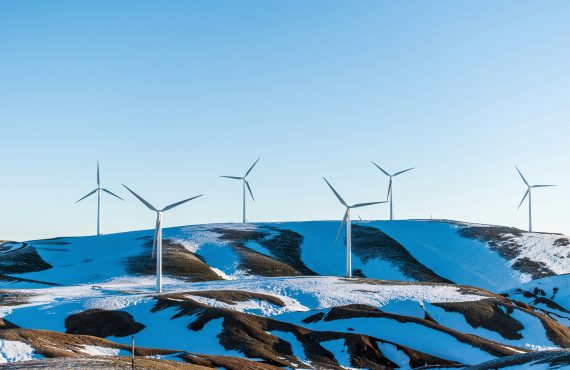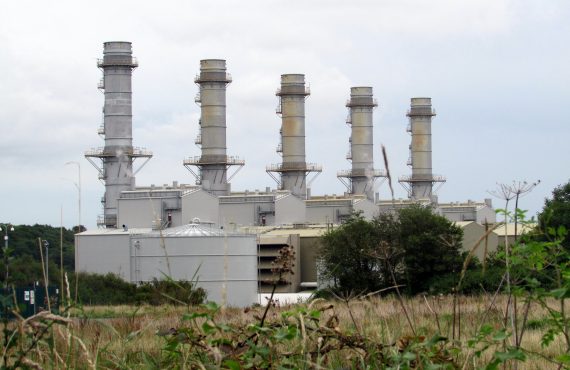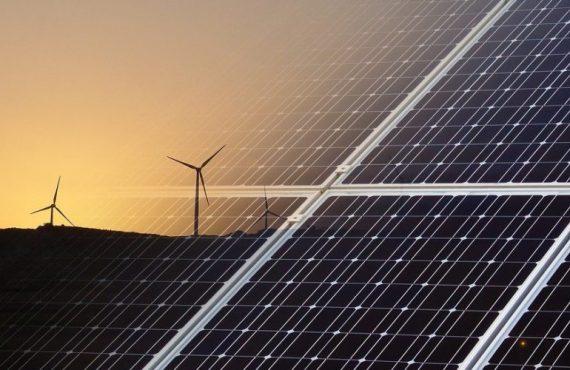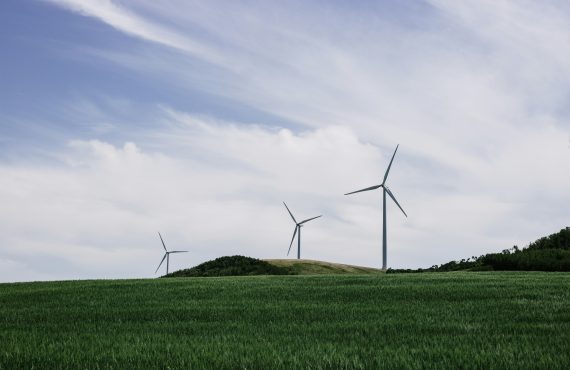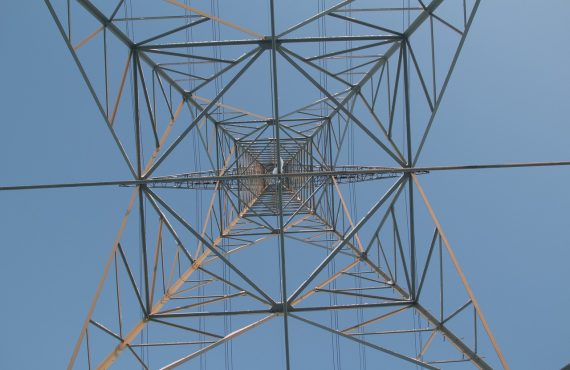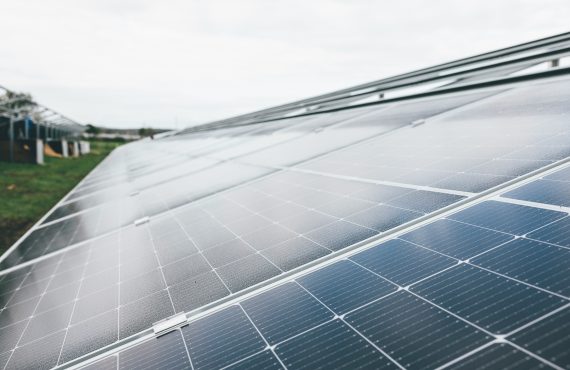The monthly emissions from each power plant in Greece are estimated based on the latest available electricity production data (August 2024 for the interconnected network and July 2024 for the non-interconnected islands) and the annual CO2 emissions from ETS (2023), following the methodology and assumptions presented here.
Carbon intensity of electricity production
Carbon intensity[1] is an important indicator of the decarbonization of the power sector. Low carbon intensity means a cleaner electricity production mix, decarbonized from polluting fossil fuels.
Carbon intensity has been reducing significantly throughout the last decade in Greece. Up until 2019, carbon intensity was fluctuating above the 500 g. CO2/kWh, while in 2023 it reached 315 g. CO2/kWh.
Progress continues into 2024, as during the first eight months of the year the average carbon intensity fell further to 267 g. CO2/kWh. However, in August carbon intensity was 279 g. CO2/kWh, which is an increase compared to the previous three months (April-July), due to the increased use of fossil fuels, mainly fossil gas.
Emissions in 2024 could have been reduced even further if RES curtailments had been avoided and the corresponding quantity of energy was allocated to limit the production of gas plants. A total of 565 GWh were curtailed by August. Taking into account the carbon intensity of the first 8 months of the year, 139 thousand tons of carbon dioxide could have been avoided, an amount approximately equal to the emissions of South Rhodes oil plant during that period.
Emissions per fuel
In total, in the first eight months of 2024 an estimated 10.09 million tons of CO2 were emitted for electricity production. Emissions from fossil gas plants exceeded 50% of the country’s total (5.23 million tons or 51.8%) as well as those from lignite plants (2.87 million tons or 28.4%). The share of oil plants was much smaller (1.99 million tons or 19.7%).
Emissions from the electricity production sector decreased only by 0.33 million tons (or -3.2%) in the first eight months of 2024 compared to the same period in 2023. This performance is mainly due to the increase in the use of fossil gas, which outweighed the decrease in emissions from the reduction of lignite. The emissions from fossil gas plants increased by +1.11 million tons or +26.9%, due to a corresponding 32.6% increase in electricity production from gas in the first eight months of 2024. In contrast, emissions from lignite plants decreased (-1.49 million tons or -34.1%) because of a 30.1% reduction in electricity production from lignite plants. Finally, emissions from oil plants increased slightly compared to the first eight months of 2023 (+0.05 million tonnes or +2.4%).
Compared to the five-year average, total emissions in the first eight months of 2024 decreased by 3.79 million tons (-27.3%). The decrease came from all three fuels, with the largest being from lignite (-4 million tons or -58.3%). It is noteworthy that at the beginning of the five-year period (2019), emissions from lignite plants (11.94 million tons) were more than four times higher compared to the first eight months of 2024. Oil also decreased (-0.1 million tons or -6.8%), while fossil gas recorded an increase (+0.32 million tons or +6.5%).
Emissions per thermal power plant
In terms of the distribution of emissions among power plants, the lignite power plant of Agios Dimitrios retained the 1st place in the first eight months of 2024, emitting 1.74 million tons of CO2 (61% of the total lignite emissions). In the first five months of 2024, three of its five units (III-V) – those covering the district heating of the city of Kozani – operated. In June only unit III operated with low production (19.3 GWh), while in July and August all five units of the plant operated.
Ptolemaida 5 was second with 0.94 million tons, while at the half-year it was in third place, mainly due to its increased production in July and August. The third lignite power plant, Meliti, was 17th with 0.18 million tons, while the fourth still available lignite plant, Megalopoli IV, was 30th as it only operated minimally in June 2024 (9.14 GWh).
The fossil gas plant Agios Nikolaos II was third overall (0.87 million tons), while Lavrio IV-V was fourth (0.67 million tons). Fossil gas-fired plants, in total, accounted for more than 60% (64.6%) of the emissions from thermal plants in the country’s interconnected grid (lignite and fossil gas together).
In the non-interconnected islands, the three oil stations located in Crete (Aterinolakkos, Linoperamata and Chania) were the top polluters with emissions of 0.47, 0.36 and 0.19 million tons respectively in the first eight months of 2024. Cumulatively, the top three polluting oil stations represent 51.4% of total emissions in the non-interconnected islands. They are 7th, 13th and 16th respectively in the general ranking of all thermal power plants in the country in terms of emissions.
Emissions of PPC ‘s thermal power plants
PPC seems to remain committed to drastically reducing its carbon footprint. Specifically, in its new strategic business plan for the 2024 – 2026 period, presented in January 2024 at the Capital Markets Day in London, it committed to reducing emissions from its thermal plants to 5.9 million tons in 2026, a reduction of 75% compared to 2019 levels.
In the first eight months of the year, PPC’s thermal plants emitted 6.76 million tons, a 14.6% decrease compared to the same period in 2023. This reduction is almost five times the corresponding percentage reduction recorded in the emissions of all thermal plants in the country (-3.2%).
Therefore, PPC’s remaining carbon budget[2] for the remaining five months of 2024 is 2.85 million tons, that is 29.6% of the total coal budget for the year. Based on the eight-month climate performance, PPC is marginally off track to meet the target[3].
You can see the evolution of the electricity sector emissions since 2013, as well as read the analyses from previous months here.
[1] Carbon intensity is defined as the ratio of emissions from the three fossil fuels (lignite, gas and oil, including CHP) to the country’s total electricity production from the interconnected grid and the non-interconnected islands.
[2] Assuming that the reduction in emissions from 11.47 million tons in 2023 to 5.9 million tons in 2026 is linear, the available budget for 2024 is estimated at 9.61 million tons.
[3] These emissions, as well as the electricity production of non-interconnected islands for the months of 2024 which have not yet been published, are estimated based on data from previous year.




